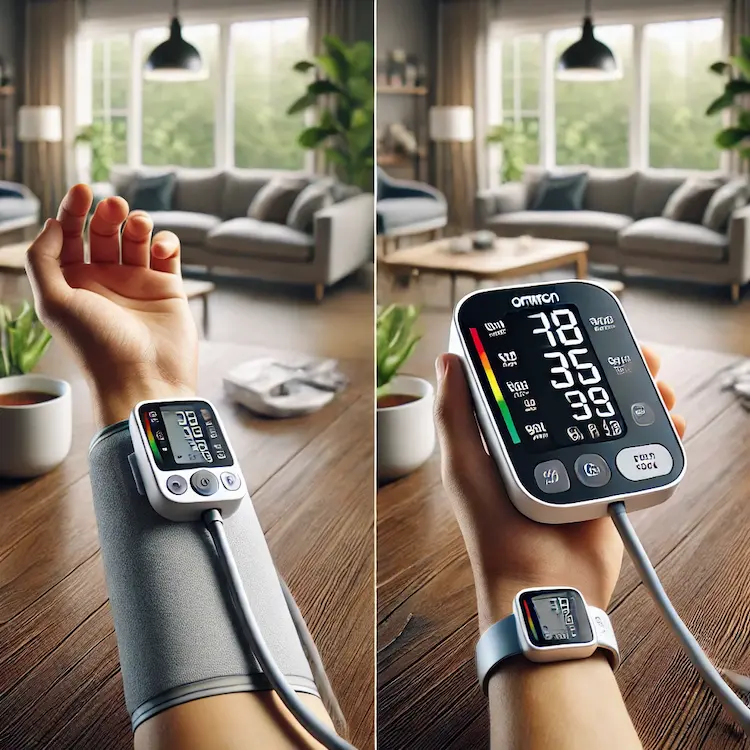Blood pressure monitors have become essential devices for individuals looking to manage their cardiovascular health. Omron, a leading brand in this field, offers a variety of models designed to cater to different user needs. Two popular models—Omron M300 and Omron RS7—stand out due to their advanced features and reliable performance. But which one is equipped with more special features?
This article provides a comprehensive comparison between these two models, highlighting their functionalities, advantages, and suitability for various users. We will break down their technical specifications, special features, and how they contribute to better health monitoring. By the end of this guide, you will have a clearer understanding of which device is the better fit for your needs.
Importance of Blood Pressure Monitoring
Why Blood Pressure Monitoring Matters
High blood pressure (hypertension) is a silent killer, affecting over 1.28 billion adults worldwide, according to the World Health Organization (WHO). Uncontrolled hypertension can lead to severe complications, including stroke, heart attack, kidney failure, and vision loss. Regular monitoring can help in:
- Detecting abnormal readings early
- Managing medication and lifestyle changes
- Reducing the risk of cardiovascular diseases
Who Needs a Blood Pressure Monitor?
- Elderly individuals: As age increases, so does the risk of hypertension.
- Hypertensive patients: To track blood pressure trends and medication effectiveness.
- Athletes and fitness enthusiasts: Monitoring BP can help assess heart health.
- Diabetics and individuals with heart disease: More frequent checks can prevent complications.

Overview of Omron M300 and Omron RS7
Omron M300: A Reliable Upper Arm Monitor
The Omron M300 is an upper-arm blood pressure monitor known for its affordability and ease of use. It is part of Omron’s basic lineup and is designed for home users who need simple and effective BP monitoring.
Key Features of Omron M300
- Upper-arm measurement for more accurate readings
- IntelliSense technology for comfortable inflation
- Memory storage for two users (60 readings each)
- Cuff wrapping guide to ensure proper placement
- Irregular heartbeat detection
- Clinically validated for accuracy
Omron RS7: A High-Tech Wrist Monitor
The Omron RS7 is a wrist blood pressure monitor designed for tech-savvy users who prefer a compact and portable device. Unlike traditional upper-arm monitors, wrist monitors are more convenient but require correct positioning for accuracy.
Key Features of Omron RS7
- Wrist-based measurement for portability
- Intellisense technology for precise and comfortable readings
- AFib detection (Atrial Fibrillation warning)
- Memory storage for 100 readings
- Positioning sensor for correct wrist placement
- Bluetooth connectivity for syncing with Omron Connect app
- Silent inflation technology
- Clinically validated for accuracy
Head-to-Head Feature Comparison
| Feature |
Omron M300 (Upper Arm) |
Omron RS7 (Wrist) |
| Measurement Type |
Upper-arm |
Wrist |
| IntelliSense Technology |
Yes |
Yes |
| AFib Detection |
No |
Yes |
| Memory Storage |
60 readings (2 users) |
100 readings |
| Bluetooth Connectivity |
No |
Yes |
| Positioning Sensor |
No |
Yes |
| Irregular Heartbeat Detection |
Yes |
Yes |
| Cuff Wrapping Guide |
Yes |
No |
| Clinically Validated |
Yes |
Yes |
| Portability |
Less portable |
Highly portable |
| Battery Life |
Long |
Moderate |
Key Differences Between Omron M300 and Omron RS7
Accuracy and Measurement Type
- The Omron M300 uses an upper-arm measurement, which is typically considered more accurate because the brachial artery (upper arm) provides more stable readings than wrist measurements. Wrist-based monitors like the Omron RS7 require precise positioning at heart level to ensure accuracy.
Winner: Omron M300 (for accuracy).
Special Features & Connectivity
- The Omron RS7 has a positioning sensor, Bluetooth connectivity, and AFib detection, making it a superior choice for tech users. The Omron M300, while accurate, lacks Bluetooth, positioning sensors, and AFib detection.
Winner: Omron RS7 (for advanced features).
User-Friendliness
- Omron M300 is easier to use for elderly users or those who prefer a traditional device.
- Omron RS7 requires correct positioning, making it slightly less intuitive.
Winner: Omron M300 (for ease of use).
Portability
- The Omron RS7 is lightweight and portable, making it ideal for frequent travelers. The Omron M300, being an upper-arm monitor, is bulkier and less travel-friendly.
Winner: Omron RS7 (for portability).

Practical Advice: How to Choose the Right Model
Here’s a quick guide based on different needs:
| User Type |
Recommended Model |
Reason |
| Elderly users |
Omron M300 |
Easy to use, highly accurate |
| Tech-savvy users |
Omron RS7 |
Bluetooth, AFib detection |
| Frequent travelers |
Omron RS7 |
Portable and compact |
| Medical professionals |
Omron M300 |
More stable readings |
| Hypertension patients |
Omron M300 |
Reliable and accurate |
Conclusion
The Omron RS7 is packed with more special features, including Bluetooth connectivity, AFib detection, a positioning sensor, and silent inflation technology. However, the Omron M300 excels in accuracy and simplicity, making it the better choice for traditional users and medical professionals.
For those who value technology and convenience, the Omron RS7 is the superior choice. On the other hand, if you prioritize accuracy and affordability, the Omron M300 remains a solid option.
Key Takeaways
- Omron RS7 has more special features (Bluetooth, AFib detection, positioning sensor).
- Omron M300 provides more accurate readings due to its upper-arm design.
- Omron RS7 is more portable, ideal for travelers.
- Omron M300 is easier to use, making it better for elderly individuals.
- Your choice should depend on your personal health needs and lifestyle.
Actionable Recommendations
- For tech users: Choose Omron RS7 for Bluetooth syncing and AFib detection.
- For accuracy-focused users: Pick Omron M300 for reliable readings.
- If you travel often: Opt for Omron RS7 due to its compact size.
- Ensure correct usage: Follow manufacturer guidelines for positioning.
- Monitor BP regularly: Maintain a tracking log to spot trends early.

